Tag: septic shock

Approach to the Critically Ill Child: Shock
If you mainly treat adults or both adults and children like me, then you have probably heard the (very annoying) quote, "kids are not just small adults", and so I won't say it again. Well, I guess I just did, but at least... read more
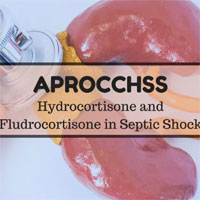
Hydrocortisone plus Fludrocortisone for Adults with Septic Shock
The use of steroids in critically ill patients continues to be controversial. Whilst there are signals for improved cardiovascular parameters, this did not translate to clear mortality benefits. The most recent of these trials... read more

Do phenylephrine and epinephrine require central access?
Until recently I believed that prolonged vasopressor administration requires a central line, to avoid extravasation. I lumped together all vasopressors, treating them all as equal. I used the occurrence of an extravasation... read more

Silent Space
Exhausted at the end of a busy week on service in the intensive care unit (ICU), the fellow and I are on our way to the conference room to debrief the week. The overhead code alarm disrupts the temporary lull in activity... read more

Intensive Care Medicine in 2050: Vasopressors in Sepsis
Vasopressors are used in sepsis when hypotension is assumed to be mainly due to a decreased arterial tone. However, the appropriate time to initiate vasopressors is not clearly defined, and fluid administration is most... read more
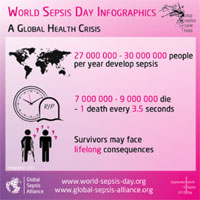
New World Sepsis Day Infographics
The new World Sepsis Day Infographics are now available for download, just in time for World Sepsis Day this Thursday. Please download them and feel free to use them as you see fit, on your social media channels, printed... read more

Hospital Variation in Risk-Adjusted Pediatric Sepsis Mortality
Margaret Parker, MD, MCCM, speaks with Stefanie G. Ames, MD, about the article "Hospital Variation in Risk-Adjusted Pediatric Sepsis Mortality," published in the May 2018 issue of Pediatric Critical Care Medicine. Dr. Ames... read more
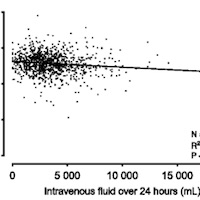
Haemoglobin concentration and volume of intravenous fluids in septic shock in the ARISE trial
Haemoglobin concentration decreases during resuscitation from septic shock, and has a significant but weak association with the volume of intravenous fluids administered. Median (IQR) haemoglobin concentration at baseline... read more

It Makes No Difference – Glucocorticoids for the Treatment of Septic Shock
The administration of a continuous infusion of hydrocortisone to a general population of patients in septic shock on mechanical ventilation cannot be recommended at this time. The authors conclusion that glucocorticoids do... read more
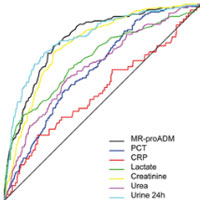
Predicting the Requirement for RRT in Intensive Care Patients with Sepsis
Sepsis is one of the most frequent causes of acute kidney injury (AKI) in critically ill patients, with initial organ impairment often followed by dysfunction in other systems. Renal dysfunction may therefore represent one... read more

Dying as a Pathway to Death in Sepsis
Mortality from sepsis remains high, with at least 270,000 deaths annually in the United States and more than 5 million deaths worldwide. Despite increasing understanding of the pathophysiology of sepsis, outside of targeted... read more

Duration of hypotension before initiation of effective antimicrobial therapy is the critical determinant of survival in human septic shock
Effective antimicrobial administration within the first hour of documented hypotension was associated with increased survival to hospital discharge in adult patients with septic shock. Despite a progressive increase in mortality... read more

The Effect of Alcohol Consumption on the Risk of ARDS
Chronic high alcohol consumption significantly increases the risk of ARDS. This finding suggests that patients admitted to hospital should be screened for chronic alcohol use. Seventeen observational studies (177,674 people)... read more
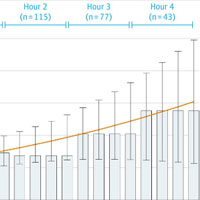
Association Between the New York Sepsis Care Mandate and In-Hospital Mortality for Pediatric Sepsis
In New York State following a mandate for sepsis care, completion of a sepsis bundle within 1 hour compared with not completing the 1-hour sepsis bundle within 1 hour was associated with lower risk-adjusted in-hospital mortality... read more




